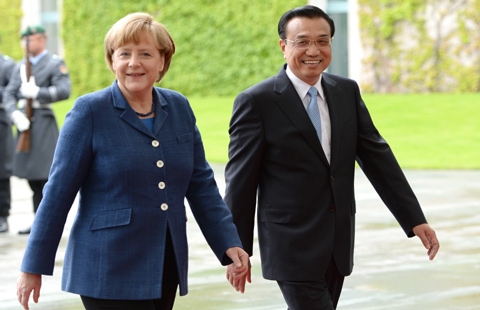Stunning Italian art may inspire great works by 2 nations
The Renaissance art and sculptures at the Palazzo Barberini in the ancient city of Rome inspired many in the 16th century. Its stunning and epoch-making beauty has also transcended hundreds of years to leave an impact today.
Dozens of Chinese and Italian corporate leaders gathered in the Baroque palace on Tuesday night to witness the signing of more than $10 billion in deals.
These agreements, in terms of total value, have gone beyond any other deals that Italy has signed with China in history, according to local media.
But after sitting through so many signing ceremonies between the Chinese government and other governments, I was puzzled at first to see so many businesspeople not directly related with the deals also present to share the joy.
It was an unusual practice, but such sharing not only spreads happiness, but also generates an inner yearning in these corporate leaders that one day they will be able to enjoy the same ritual themselves.
Indeed, their ambition may well not be groundless. China and Italy have seen the most cooperation in decades, as bilateral trade has increased at a double-digit pace despite the global recession and diminishing buying power.

The world's top trader has already spent well more than $845 million to buy products in Italy this year and $6.3 billion buying stakes in some of Italy's biggest companies.
As Premier Li Keqiang said, some of the works made during the Renaissance were deemed inappropriate at that time, but they became accepted and appreciated by the world over time.
Such a transformation has been made possible not only due to economic growth, but more important, through the openness of people's minds.
Indeed, for countries with as many similarities in culture and history as China and Italy have, the deals being reached now are no more than an "antipasto", or appetizer, for bilateral exchanges to come, as Italian Prime Minister Matteo Renzi has put it.
As Li said, being in the hall with so many ancient innovative works compels us to come up with deeper and more creative cooperation ideas.
And the upcoming main courses, as well as the innovative ideas, should not be limited to economic ones only.
China can learn much from Rome's civilization: the citizenship spirit, for instance, and the relatively complete and balanced legal network that was formed over 2,100 years ago.
China will soon become the world's largest economy. Its success in maintaining economic growth and improving people's lives has stunned the world, and so has its quest to ensure an independent and transparent judicial system. Such efforts will continue. After all, Rome could not be built in one day, and Italy can be a good role model for China in this regard.
Contact the writer at zhaoyinan@chinadaily.com.cn.
(China Daily 10/16/2014 page2)
Background







